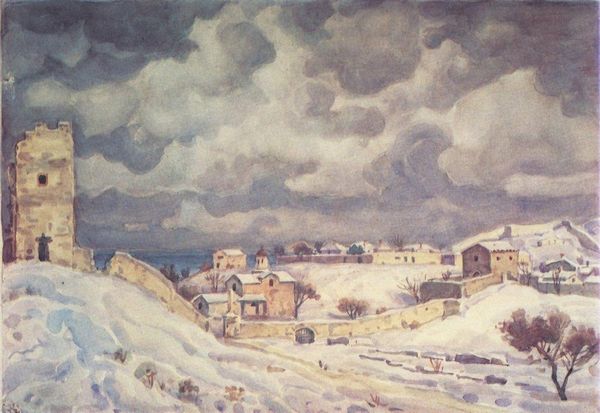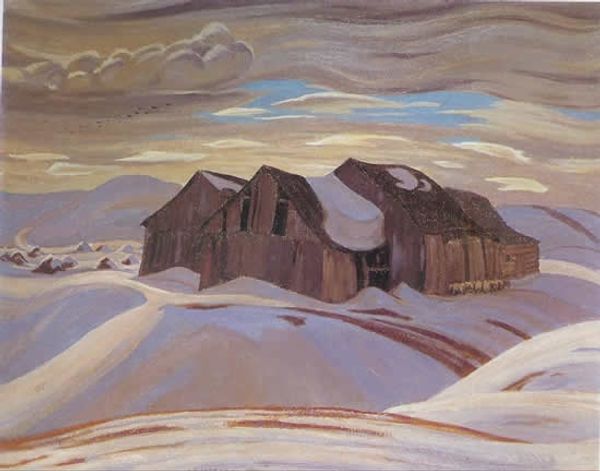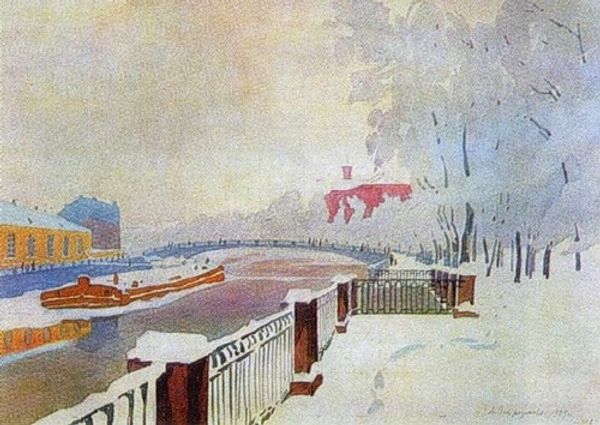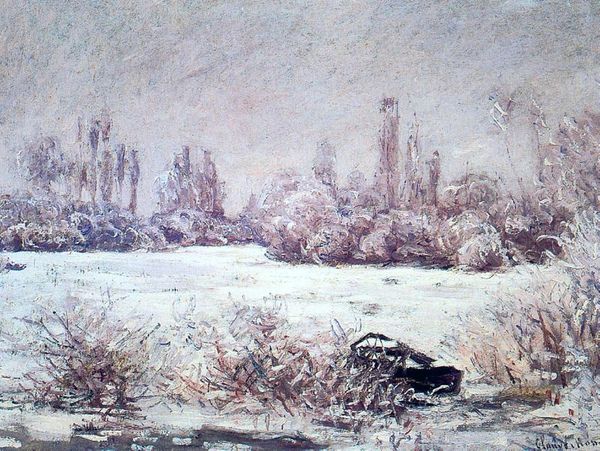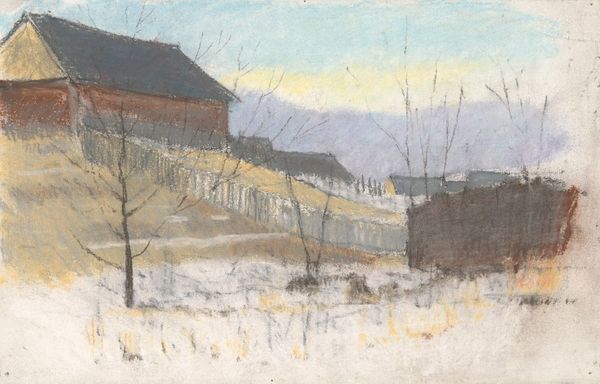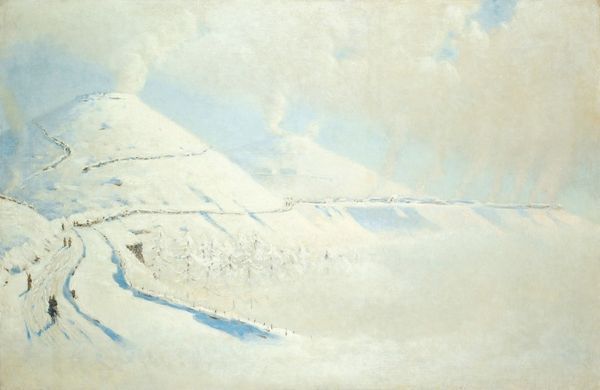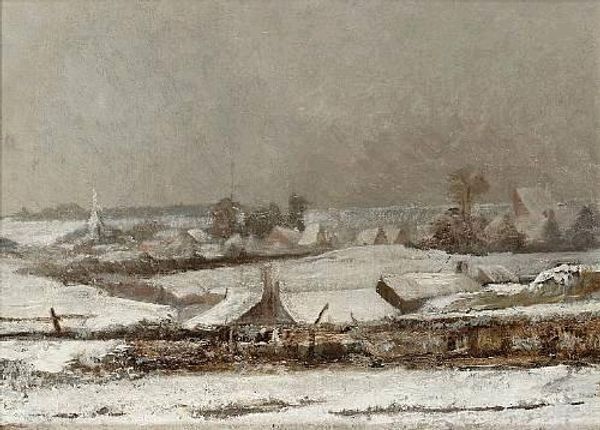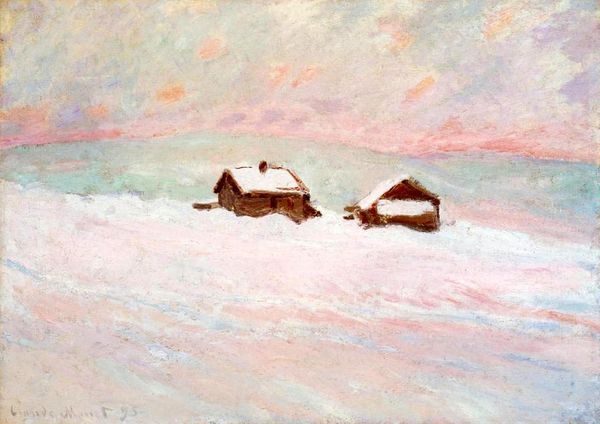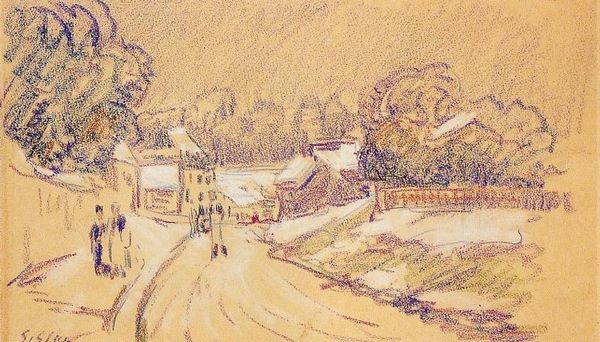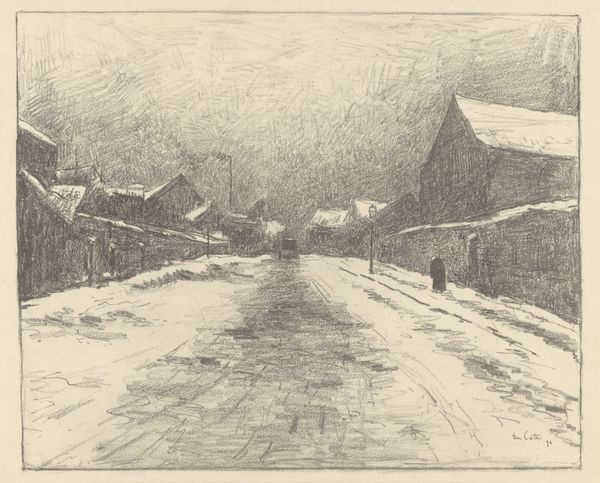
painting, impasto
#
snow
#
painting
#
neo-impressionism
#
landscape
#
winter
#
impressionist landscape
#
impasto
#
geometric
#
post-impressionism
Copyright: Public domain
Curator: Albert Dubois-Pillet's "Winter Landscape," painted in 1885, offers a captivating glimpse into a snow-covered countryside rendered with incredible detail. Editor: It almost vibrates, doesn't it? A seemingly simple scene made extraordinary by that intense application of paint. Curator: Indeed. Dubois-Pillet, deeply involved in the burgeoning Neo-Impressionist movement, was intensely interested in how he could develop the innovative techniques to depict atmosphere and the fleeting effects of light. Look closely and you’ll see it’s crafted through countless tiny dots of color, a hallmark of pointillism. What's fascinating is his use of impasto, that thick, textured paint application that builds a tangible surface, bringing the harsh, cold of winter nearly into reach. Editor: It’s that application which also speaks to labor. We're witnessing a radical shift here; he has moved from representation of labor of farmhands in winter to focus the artistic production that generates this painting itself. In its creation, Dubois-Pillet engages with the tradition of landscape painting but also refigures it by highlighting how paint generates value through its very application. Curator: Exactly! And he does so against the grain, perhaps consciously commenting on the plight of many in 19th-century France by foregrounding landscape in the context of increased urbanization and industrialization. The political turbulence in the era also informs a reading of this, given Dubois-Pillet's military background, to interrogate themes of detachment, solitude, and our relationship to nature and labor, where a landscape so austere is perhaps as isolating for those represented within it as for a viewer confronting it. Editor: I find myself wondering what Dubois-Pillet might think of the social shifts of today, where access to nature is profoundly unequal. It seems a far cry from an art world consumed with market and celebrity! Curator: Agreed. And, through its tangible engagement with labor, this work still generates valuable reflection upon our relation to nature. Editor: An exquisite tension between artistic method and subject matter is generated in this painting, isn't it?
Comments
No comments
Be the first to comment and join the conversation on the ultimate creative platform.
